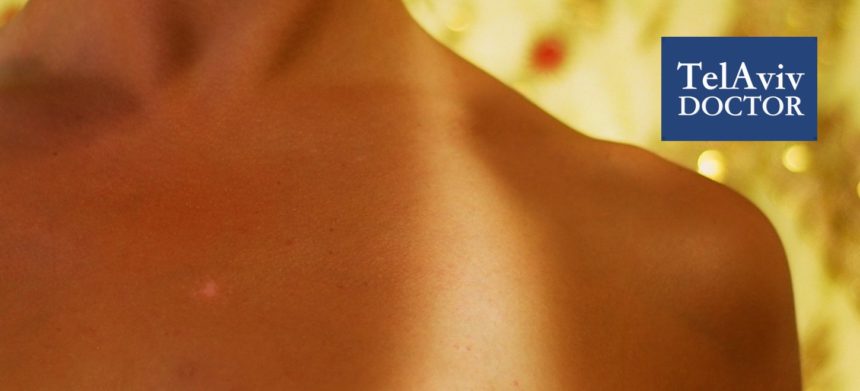When you tell people that they have damaged their heart/ liver/ kidney (or any other organ perceived as vitally important), most are quite rightly distressed. So why do we still see people on the beach looking like lobsters?
The fact is, the skin is the largest organ in our body, and without it, we wouldn’t be able to survive. It protects our bodies from infection, and amongst other things, helps us to produce vitamin D. This fantastic organ can be damaged in many ways, but probably the most common, and preventable way, is through the sun.
‘But the sun is amazing and makes us feel great and ‘glow’ and look good’ …. and it damages your skin. It does this because the rays of sunlight are a form of radiation. Radiation damages DNA in cells, and this is bad. This is why no one wants to live near Chernobyl and why we have to carefully regulate radiation exposure during medical tests and procedures.
Cell DNA helps control how cells grow, and when they are damaged, they can grow abnormally and in an out of control fashion. This is the reason why any kind of radiation of exposure (including from the sun) increases risk of cancer.
Two types of UV Rays: Effect on the Skin of UVA and UVB
You may have heard that there are two main types of UV rays that penetrate the Earth’s atmosphere and cause us problems. UVA rays are present year round and are responsible for most of our UV exposure. UVA rays are less intense then their UVB counterpart, but they penetrate much deeper into the layer of the skin and cumulatively over time cause damage that leads to photo aging and potentially skin cancers. They are not usually responsible for the burning we get when we’ve fallen asleep on the beach, but they will give you that withered leathery skin look over time that we are all trying to eliminate with Botox.
UVA rays are also responsible for ‘tanning’- that darkening of the skin that is seen when DNA is damaged. Therefore, in the interests of avoiding said ‘leathery skin look’ and DNA damage it is important to protect your skin from UVA rays as well as UVB rays.
UVB on the other hand, is the nasty that leaves you feeling like you’ve been blowtorched and looking like a lobster and is the chief cause of most skin cancers. Unlike UVA, the intensity varies according to location, time of day and season. This is why the general advice is to stay out of the sun as much as possible between 10 and 4pm during the hottest months when UVB rays are at their strongest.
Burning can however happen all year round, and especially at high altitudes and when you are near reflective surfaces like snow and ice. These cause the rays to bounce back again onto the skin, meaning you get a double whammy of UVB exposure.
Sunburn Protection: Medical Tips
If you’re still reading and I’ve scared you enough, I imagine you might want to know what you can do to protect yourself. For ease of reading, these are the main points:
- Avoid sun exposure during the hottest part of the day (generally 10/11-3/4) or stay in the shade as much as possible.
- Keep your head covered, ideally with a wide brimmed hat, and especially important if you’re bald or have thinning hair.
- Use a liberal amount of sun lotion as instructed, and RE-APPLY regularly and after showering/ swimming/ sweating/ toweling. Most of us are going wrong by not using enough lotion and/ or not reapplying at appropriate intervals.
- Keep covered as much as possible. If your eyes can see though clothing- UV rays can get through too!
- Use UV blocking sunglasses.
- Please, please, please DON’T use tanning booths or sunbeds.
- Use a higher protection SPF for when outside (30+).
- Don’t allow yourself to burn. Sunscreen doesn’t work on already burnt skin.
- Remember that even with the highest SPF sunscreen, not all UV rays can be filtered.



